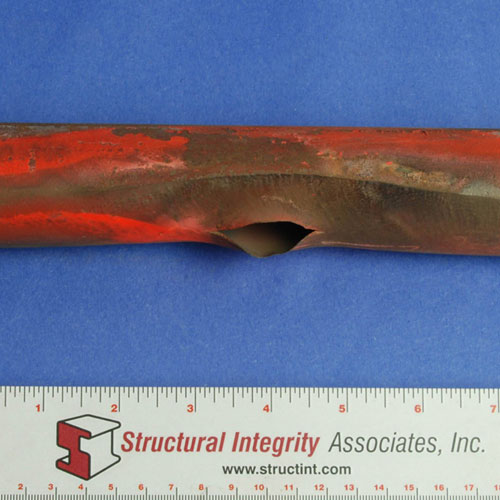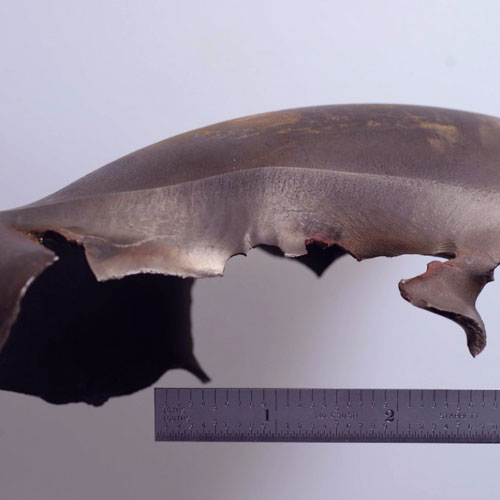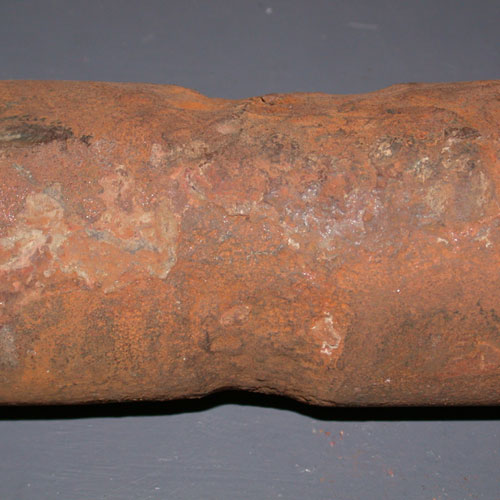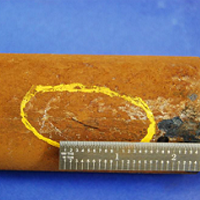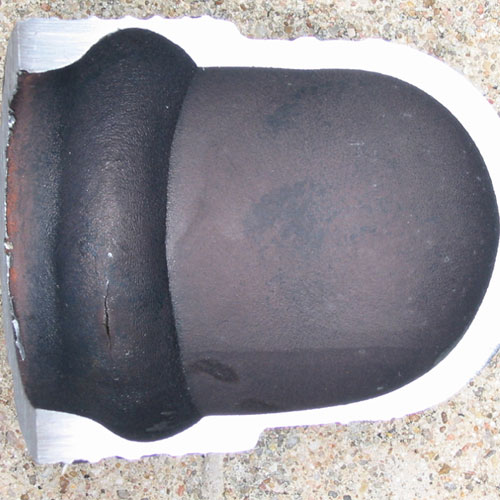Flyash Erosion
Description
Mechanism
Flyash erosion results in direct mechanical tube material removal. Removal of fireside oxide also contributes to material wastage by increasing the fireside oxidation rate. The rate and extent of damage due to flyash erosion is related to local particle velocity, ash loading, angle of particle impact, particle composition and shape, and erosive resistance of the tube surface, which is related to tube metal temperature and tube material composition. Since local velocity is the predominant factor, flyash erosion will be a concern where nonuniform, high gas flows develop locally anywhere in the boiler.
Typical Locations
- Waterwall tubes in the backpass
- Economizer
- Primary superheater
- Reheat inlets
Features
- Fireside mechanism that results in material loss on the gas flow facing surfaces of affected tubes
- Heavy, black polished or burnished areas
- Formation of flat areas and edges on the tube
- Thin edged pin holes or ruptures
Root Causes
Primary root causes of flyash erosion include excessive local velocity and high ash loading levels. Increases in local velocity can be due to design, operational, and/or maintenance issues. Ash loading levels are related to fuel, and can also be influenced by sootblower operation or maintenance issues.
Design issues leading to increased local velocity include corners, walls, staggered banks, and section changes. Operation above the continuous design rating or at excess air flows above design can increase local velocities. Fan or air heater imbalances can cause non-uniform velocities as well. From a maintenance perspective, distortion or misalignment of tubing rows and misalignment or loss of gas flow guides and baffles are issues that can result in increased velocities.
Root causes related to increased ash loading levels are generally due to a change in fuel that either contains more ash or contains elements that are more erosive. Changes in fuel handling, such as washing and blending methods, can also influence the ash loading levels.
Lastly, shields and baffles that were installed to combat fly ash erosion issues can move or redirect the problem if they were not properly designed and installed.
Corrective Actions
Initially, all affected areas should be examined for wall thinning, including by ultrasonic thickness testing, and necessary repairs should be made. Corrective actions that involve reducing the use of shields, baffles, weld overlays, coatings, and tube replacements are very often only temporary solutions. The use of the cold air velocity technique (CAVT) to identify areas with excessive local velocity, followed by the installation of diffusion and distribution screens provides the most permanent solution to flyash erosion damage.
SI Services
- NDE/inspection services to define the geography of damage using ultrasonic testing (UT).
- Provide recommendations for appropriate tube sampling locations.
- Mechanism identification through comprehensive metallurgical analysis of the failure areas.
- Provide guidance on CAVT testing.
- Support the implementation, review and follow-up of the action plan and assess the results. Provide advice and guidance on repair aspects.
Additional information
| Boiler Type | |
|---|---|
| Fuel | |
| Boiler Region | |
| Metallurgy | |
| Failure |

